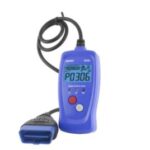OBD2 readiness monitors are essential self-diagnostic routines that provide valuable insights into your vehicle’s emission control systems. This guide delves into Im Status Obd2, explaining what it is, why it’s important, and how to ensure your vehicle is ready for inspection.
Understanding your car’s IM status OBD2 is crucial for maintaining its health and ensuring compliance with emission regulations. These monitors, also known as emissions monitors, automatically test various components of your vehicle’s emission system. The “IM” in IM Status stands for Inspection/Maintenance, signifying its importance for vehicle inspections. By understanding how these monitors work, you can address potential issues before they become major problems.
Types of OBD2 Readiness Monitors
There are two primary types of OBD2 readiness monitors:
-
Continuous Monitors: These monitors constantly evaluate specific systems while the engine is running. Examples include the misfire monitor, fuel system monitor, and comprehensive component monitor. These continuous checks ensure that crucial systems are functioning correctly at all times.
-
Non-Continuous Monitors: These monitors require specific driving conditions to run their tests. Conditions may include specific speed, temperature, and load parameters, often referred to as a “drive cycle.” Examples include the catalyst monitor, evaporative system monitor, and oxygen sensor monitor. Non-continuous monitors often require more specific driving conditions to complete their diagnostic tests. For gas (spark ignition) vehicles this can include the Catalytic Converter (CAT), Heated Catalyst, Evaporative System (EVAP), Secondary Air System, Oxygen Sensor (O2), Oxygen Sensor Heater, and EGR/VVT System. For diesel (compression ignition) vehicles, this includes NMHC Catalyst, NOx/SCR Aftertreatment, Boost Pressure, Exhaust Gas Sensor, PM Filter, and EGR/VVT system.
Example of OBD readiness monitors being read with a Windows-based application.
OBD2 Monitor Status: Complete, Incomplete, and Disabled
Each monitor has a status indicating whether the test has been completed successfully:
-
Complete (Ready): Indicated by a green checkmark, this status signifies the system has passed the test.
-
Incomplete (Not Ready): Indicated by a red exclamation mark, this status means the test hasn’t been completed or has failed. This could be due to a variety of reasons, from recently cleared diagnostic trouble codes to insufficient driving to complete the monitor’s required drive cycle.
-
Disabled: This status signifies the test has been disabled for the current driving cycle, often due to conditions that prevent the monitor from running (e.g., extreme temperatures).
Why is a Monitor Incomplete?
Several factors can lead to an incomplete monitor status:
-
Recently Cleared Codes: Clearing Diagnostic Trouble Codes (DTCs) resets monitor statuses.
-
Power Interruption: Disconnecting the battery can also reset monitors.
-
Insufficient Driving: Non-continuous monitors require specific driving patterns to complete their tests.
-
Malfunctioning Component: A faulty component can prevent a monitor from completing its test.
Completing OBD2 Monitor Tests: The Drive Cycle
Completing a drive cycle allows your vehicle to run the necessary diagnostics. While generic drive cycles exist, consulting your vehicle’s owner’s manual for a specific drive cycle is recommended.
A generic drive cycle often involves variations in speed, acceleration, and idling time to activate different monitors. Ensure your Malfunction Indicator Light (MIL) is off and you have sufficient fuel before attempting a drive cycle. Completing a drive cycle, often involving a combination of city and highway driving, helps ensure all monitors run their tests.
IM Status OBD2 and Vehicle Inspections
A vehicle with incomplete monitors may fail an emissions inspection. Ensuring all monitors are complete before an inspection is vital to avoid failing an emissions test. You can check your vehicle’s IM status OBD2 using an OBD2 scanner. Addressing any incomplete monitors promptly can save time and potential repair costs.
Conclusion
Understanding your vehicle’s IM Status OBD2 is crucial for maintaining its emissions system and passing inspections. By familiarizing yourself with the different monitor types and statuses, you can proactively address potential issues and ensure your vehicle remains compliant with emission regulations. Regularly checking your IM status using an OBD2 scanner empowers you to take control of your vehicle’s health and avoid costly repairs.

